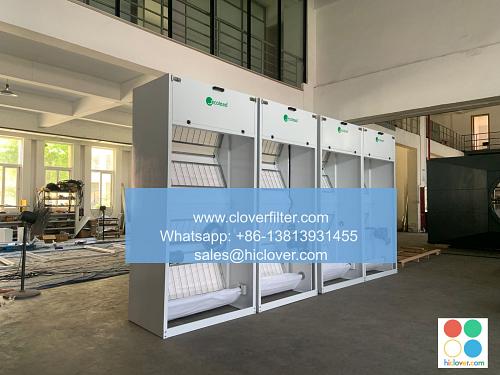Filtering the Air, Naturally: The Benefits of Activated Carbon Filters

Activated carbon filters have become a popular choice for air purification due to their natural ability to absorb and neutralize pollutants, allergens, and toxic gases. These filters utilize activated carbon, a highly porous material that is derived from natural sources such as coconut shells, bamboo, or wood. In this article, we will delve into the benefits of activated carbon filters, their applications, and the advantages of using them in various settings.
How Activated Carbon Filters Work
Activated carbon filters work by using a process called adsorption, where pollutants and gases are attracted to the surface of the activated carbon. The activated carbon is highly porous, with a large surface area that allows it to trap and hold onto these pollutants, preventing them from being released back into the air. This natural process is highly effective in removing a wide range of airborne contaminants, including volatile organic compounds (VOCs), nitrogen dioxide, and particulate matter.
Benefits of Activated Carbon Filters
The benefits of activated carbon filters are numerous and well-documented. Some of the key advantages include:
* Improved Indoor Air Quality (IAQ): Activated carbon filters can significantly reduce the levels of airborne pollutants, creating a healthier and more comfortable indoor environment.
* Relief from Allergies and Asthma: By removing allergens and triggers from the air, activated carbon filters can provide relief for individuals suffering from allergies and asthma.
* Odor Removal: Activated carbon filters are highly effective in eliminating unpleasant odors and smells, leaving the air fresh and clean.
* Chemical and Gas Removal: Activated carbon filters can remove a wide range of chemicals and gases, including VOCs, formaldehyde, and nitrogen dioxide.
Applications of Activated Carbon Filters
Activated carbon filters have a wide range of applications, including:
* Home Air Purification: Activated carbon filters can be used in home air purifiers to improve indoor air quality and reduce allergens and pollutants.
* Commercial Air Filtration: Activated carbon filters are often used in commercial settings, such as offices, restaurants, and hotels, to improve indoor air quality and reduce odors.
* Industrial Air Purification: Activated carbon filters are used in industrial settings to remove pollutants and chemicals from the air, improving worker health and safety.
* Vehicle Air Filtration: Activated carbon filters can be used in vehicle air purification systems to remove pollutants and allergens from the air, improving driver and passenger health.
Highlighting Various Application Areas
Activated carbon filters can be used in a variety of settings, including:
* Hospital and Healthcare Settings: Activated carbon filters can be used to remove airborne pollutants and bacteria, improving patient health and reducing the risk of hospital-acquired infections.
* Schools and Educational Institutions: Activated carbon filters can be used to improve indoor air quality, reducing allergens and pollutants that can affect student health and performance.
* Public Transportation: Activated carbon filters can be used in public transportation systems, such as buses and trains, to improve indoor air quality and reduce pollutants.
Conclusion
In conclusion, activated carbon filters offer a natural and effective solution for improving indoor air quality and removing airborne pollutants. With their wide range of applications and benefits, activated carbon filters are an excellent choice for anyone looking to improve their health and wellbeing. Whether used in home, commercial, or industrial settings, activated carbon filters are a simple and effective way to filter the air, naturally. It seems like you forgot to include the prompt. Could you please provide more details or clarify what you would like to talk about? I’m here to help with any questions or topics you have in mind!

